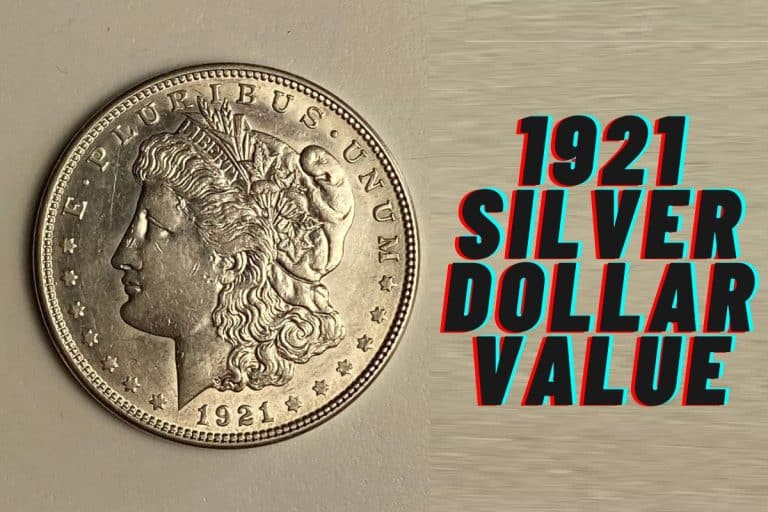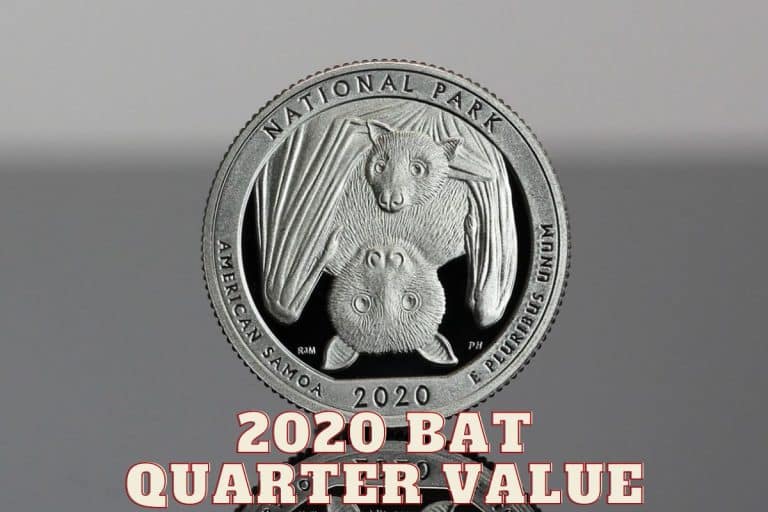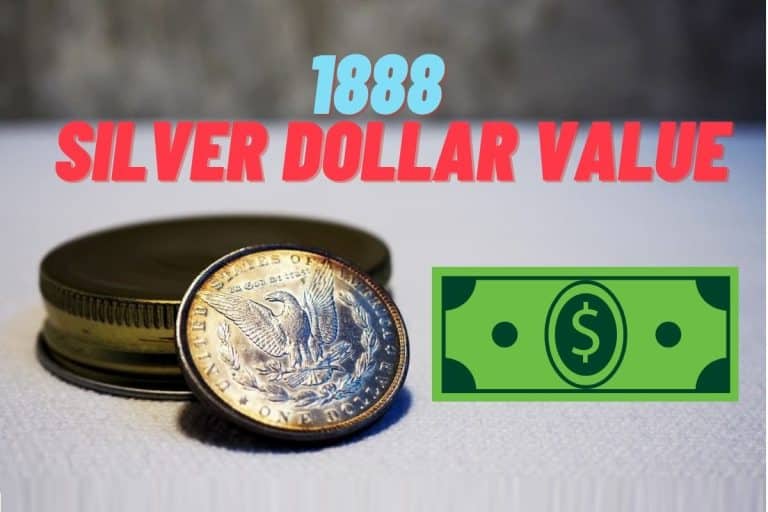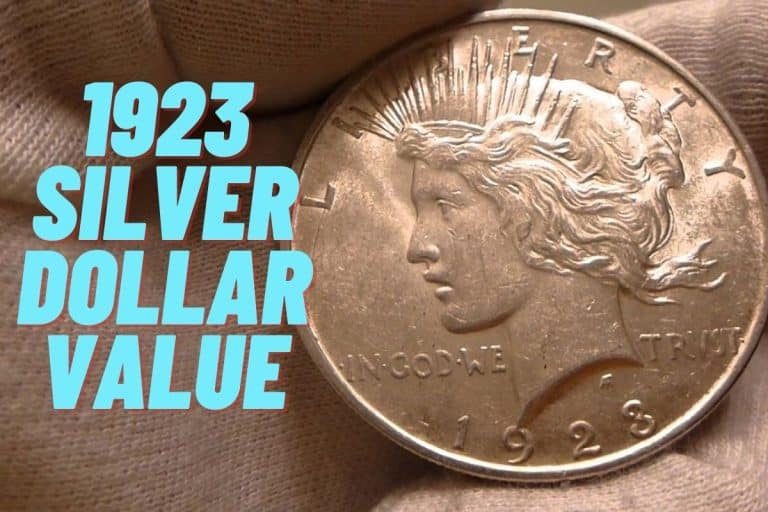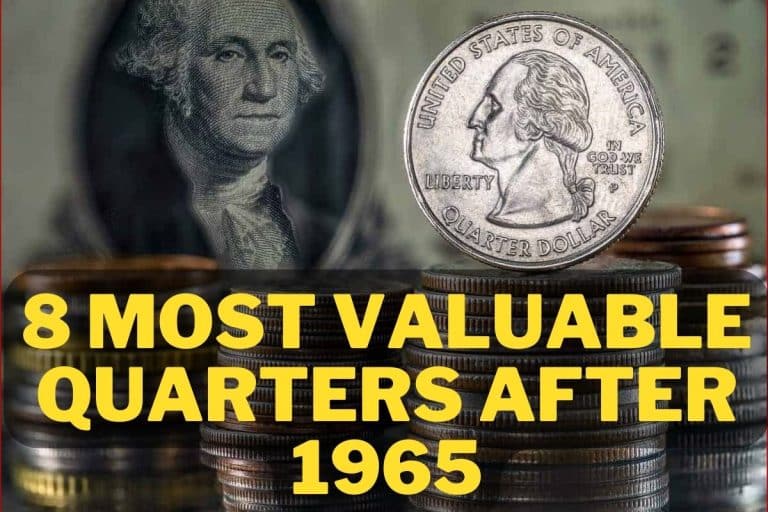If you're looking to add a rare and valuable coin to your collection, the 1982 Quarter is an excellent choice. This particular coin is a highly sought-after item among coin collectors due to its unique design.
The 1982 quarter value is an attractive coin. This quarter has been known to collectors and investors since 1982, but the rarity makes the 1982 quarter value stand out. The 1982 quarter value gained popularity during the 1980s when a new Mint opened in Denver, Colorado.
Its popularity comes from its limited mintages, its inclusion in numismatic sets, and its use as a trading currency during economic uncertainty. This coin's value depends on whether they have any defects or damage. Remember that different varieties of this coin are also available from other mints with various conditions. Read on for more information.
The Value of 1982 Quarter
The 1982 quarter is one of the most valuable quarters in coin history. It is worth so much because it has a great design and was issued during an important time in U.S.U.S. history. The 1982 quarters have more than their face value in today's money.
Rare coins have become sought-after collectibles. Many people collect 1982 quarters, especially the lightly circulated ones. Their condition usually influences the value of these coins. Here is this coin's value in various conditions:
About Uncirculated (A.U.)
The coin is in about uncirculated condition. It has no marks, scratches, or signs of wear on the surface. It also has no folds or creases on its surface. It has a mirror finish which makes it look like new.
The coin also has no toning or hazing on it at all. The edges should also have full definition and sharpness. Collectors should expect a price range between $1.05 to $5, depending on the coin's mint mark.
Extremely Fine (E.F.)
A coin that is E.F. will have some very light wear on the surface of its design but still retain 90% or more original mint luster with no major defects present. There may be some small nicks and scratches, but these cannot be seen without magnification.
If you hold this coin up to a light source, you should see a mirror-like quality to its finish. The edges should also have full definition and sharpness. These coins cost around $0.88 to $2.5, depending on where it was minted.
These coins are worth far more than their 25¢ face value and have been known to sell for thousands of dollars. In fact, one particularly noteworthy example is the 1982-P quarter, which sold for an incredible $10,200 at an auction in 2019.
The Value of 1982 Quarter Error

Below are some of the most common errors of the 1982 quarters.
Die Errors
The dies used to create the coins sometimes have errors, so their images do not appear correctly on the coins. For example, half of an eagle's wing appears missing in some quarters. On others, a feather appears to have been added to an eagle's tail feathers.
Strikes Errors
Strikes errors are caused when a coin is struck from an improperly prepared blank or dies. These errors typically appear as broken beads along the edge of worn coins due to improper striking pressure being applied too soon after striking.
Mint Mark Error
Mint mark errors are a common occurrence in the production of coins. Improper die preparation, cracks, or bending can cause them.
Not all errors found on a coin can be attributed to the US mint. Some errors, such as chipping, faded images, or letters, may be the result of wear and tear from use. If you have a 1982 quarter with no mint mark error, it could be worth anywhere from $1 to $9, depending on its condition.
In some cases, rare coins can fetch a high price at online auctions. For example, a 1982 D quarter with a double die error could potentially be valued at $1,000 or more.
History of the 1982 Quarter
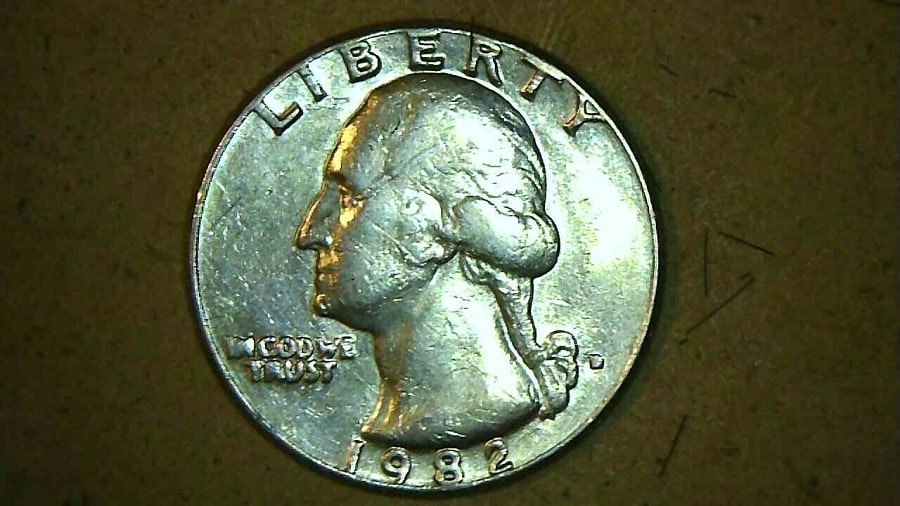
In commemoration of the 200th anniversary of George Washington's birth, the American people sought to pay tribute to their first President through the creation of a commemorative coin. Plans for celebrating such a significant milestone had been underway since 1924, but there were no noteworthy developments for the next six to seven years.
It wasn't until 1931 that Congress initiated a competition to determine the design concept for the commemorative coin, ultimately choosing Jean-Antoine Houdon's bust as the model for the obverse side of the coins.
There were now concerns about how the reverse side would look like. It needed to include a national symbol, such as the shield or an eagle on the Great Seal of the United States. Among the artists who sent their work was Sculptor Laura Gardin Fraser.
She was a renowned artist who had designed several commemorative coins before. The treasury secretary, however, did not accept the results of the competition of about 98 artists.
Since he approved the selected engraver, something could only be done with his signature. Despite the objections of many people, he chose John Flanagan's design over the others because Laura was a woman.
Despite the new Treasury Secretary's arrival, everything stayed the same. Flanagan was declared the winner of the competition by Ogden Mills after he supported his predecessor Mellon's decision.
Features of the 1982 Quarter
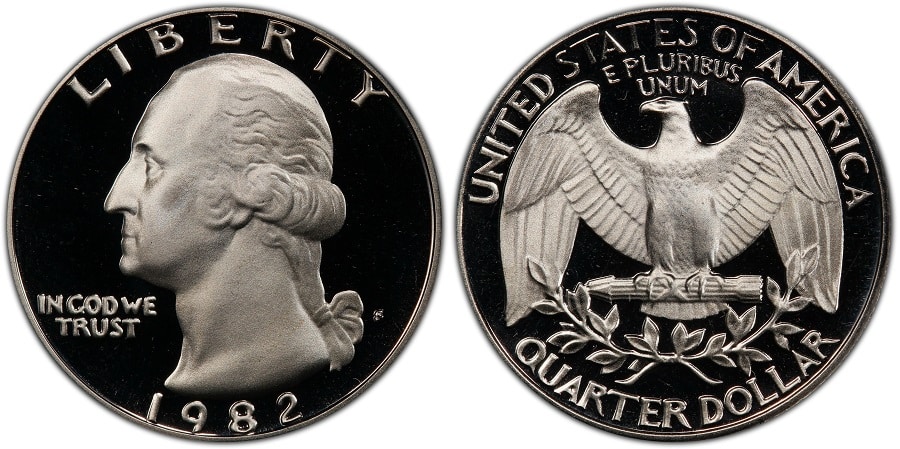
The 1982 quarter has a fantastic design. It is one of the most beautiful quarters ever released. It has the following significant features.
The Obverse
The obverse of the Washington Quarter features an adapted version of George Washington's portrait, with a crown on his head. His classic profile with a bow tie and hair pulled back has him looking to the left. Above the President's head is the word “LIBERTY.” The U.S. motto IN GOD WE TRUST is inscribed in front of the portrait. The year of minting is inscribed on the coin's rim, while the mint mark appears behind the bow holding hair.
The Reverse
A bald eagle, the United States national bird, is shown on the coin's reverse side. It faces left and has its wings spread out while holding an arrow bundle in one of its claws. These arrows represent a symbol of war. However, beneath them are two crossed olive branches representing peace.
The inscription UNITED STATES OF AMERICA is inscribed on the coin's upper rim, while the QUARTER denomination—just below an eagle's talons—appears between them. E PLURIBUS UNUM—a Latin phrase meaning “out of many, one,” is printed on the front of the coin just above and between a flying American Bald Eagle's wings.
Other Features of the 1982 Quarter
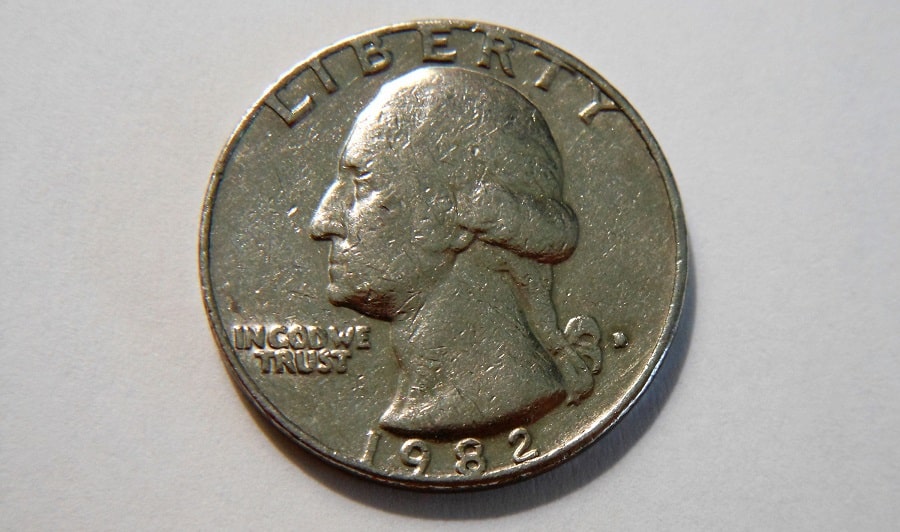
- Metal Composition: The 1982 Washington quarter is made of copper and nickel; the ratio of copper to nickel is 75% copper and 25% nickel.
- Edge: The edge of the 1982 Washington quarter has a reeded pattern, which means it has a raised or serrated edge that is less square than flat edges found on other coins.
- Mint Mark: The mint mark for the 1982 Washington quarter is located on the obverse side of the coin. It's a small letter “D” inside a circle. This indicates that the coin was produced at the Denver Mint in Denver, Colorado.
- Weight and Size: The 1982 quarter weighs 5.555 grams. It has a standard thickness of 0.0689 inches (1.75 mm) and a diameter of 0.9567 inches (24.3 mm), making it no different from other American quarters.
Conclusion
The 1982 quarter is one of the most valuable quarters in United States coinage production. The 1982 quarter saw more of these coins minted than any other date in the entire series. This means you have a precious piece if you have a high-quality specimen in your collection.

